Lumintop IYP365 review
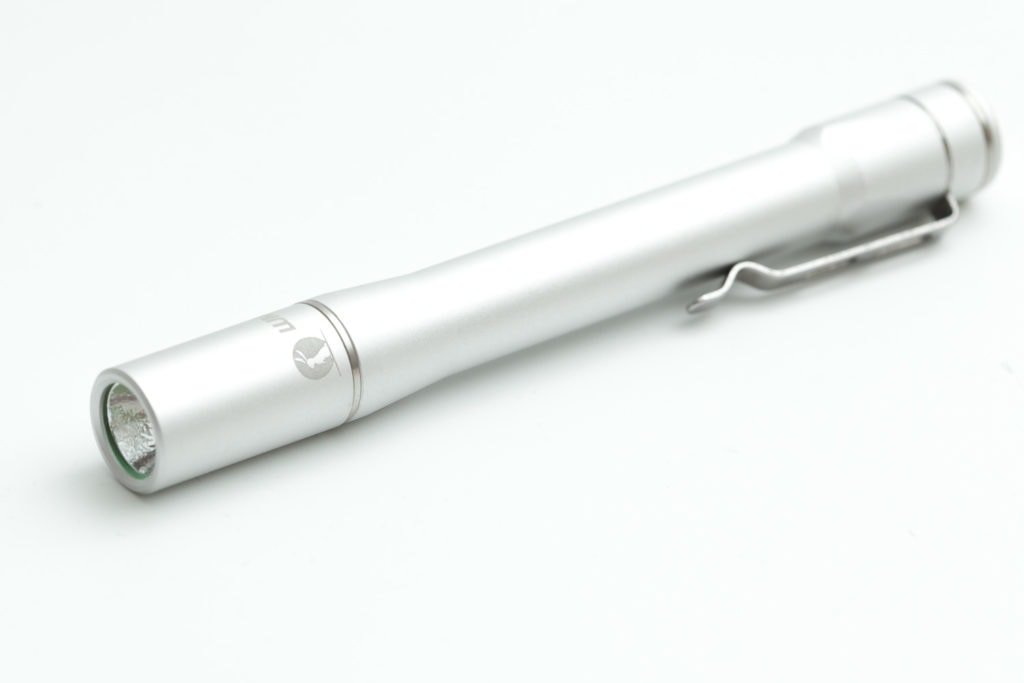
| Brand / Model | Lumintop IYP365 |
|---|---|
| LED | Nichia 219C |
| Lumens | 145 Lm |
| Beam intensity | 506cd |
| Battery config. | 2*AAA |
| Material | Aluminum |
| Modes | 3 |
| Blinkies | N/A |
| Reflector | LOP |
| Waterproof | IPX-8 |
| Review date | May 2020 |
Introduction:
We don’t normally review penlight flashlights, but I’ve been wanting to try a few and see how well they perform. The Lumintop IYP365 is an affordable penlight you may want to consider when you look for a thin 2AAA flashlight. It is available in different anodization colors as well as 2 different emitters. The one I’m reviewing here is the Nichia 219BT version. It has a lower output than the XPG3 version, but with the advantage of having a Hi CRI LED.
What you’ll get:
The package for the IYP is the typical brown cardboard box all smaller Lumintop flashlights are sent in. Inside the box you can find the following:
- The Lumintop IYP365 flashlight
- 2 spare o-rings
- White diffusor
- Pocket clip (attached to the light)
- Manual

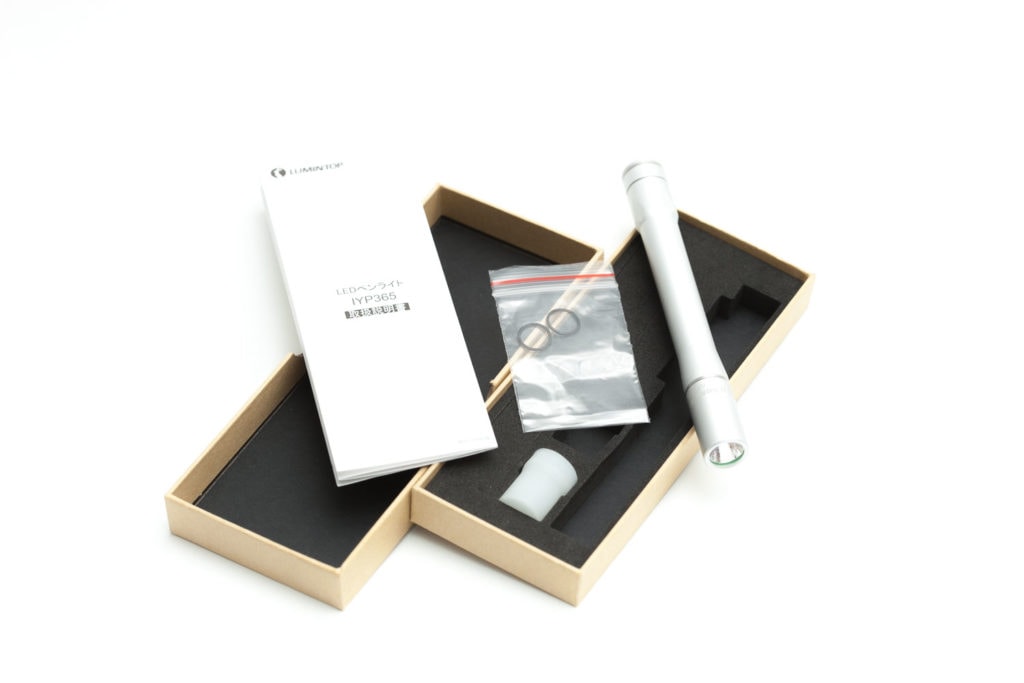
Handling of the light
The Lumintop IYP365 is not your regular EDC flashlight. In the product description, Lumintop tries to market the flashlight to the medical world. One of the things it says about the Nichia LED: Take care of people’s eyes with high color rendering. This means that it is supposed to be thin and light. A perfect gift for nurses?
The body feels very thin. You don’t need to worry about the switch because it slightly protrudes. Even with medical hand gloves you can easily switch modes and turn it off.
There is almost no knurling or anything but the coating is a little rough so it’s not very slippery. Just like with every other penlight, there is a short pocket clip near the tail.
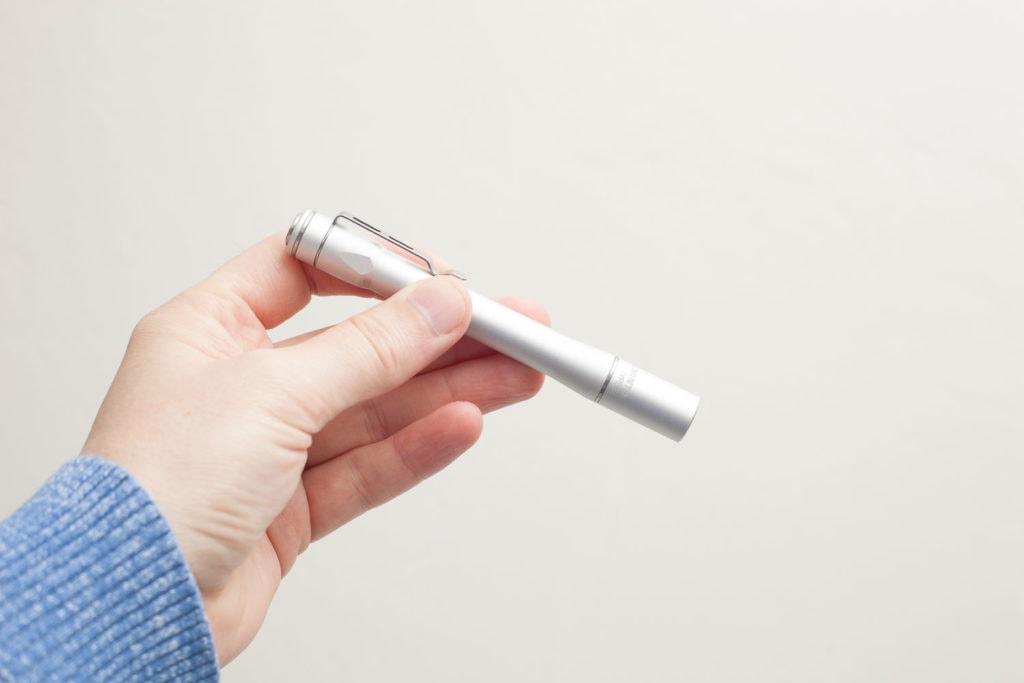
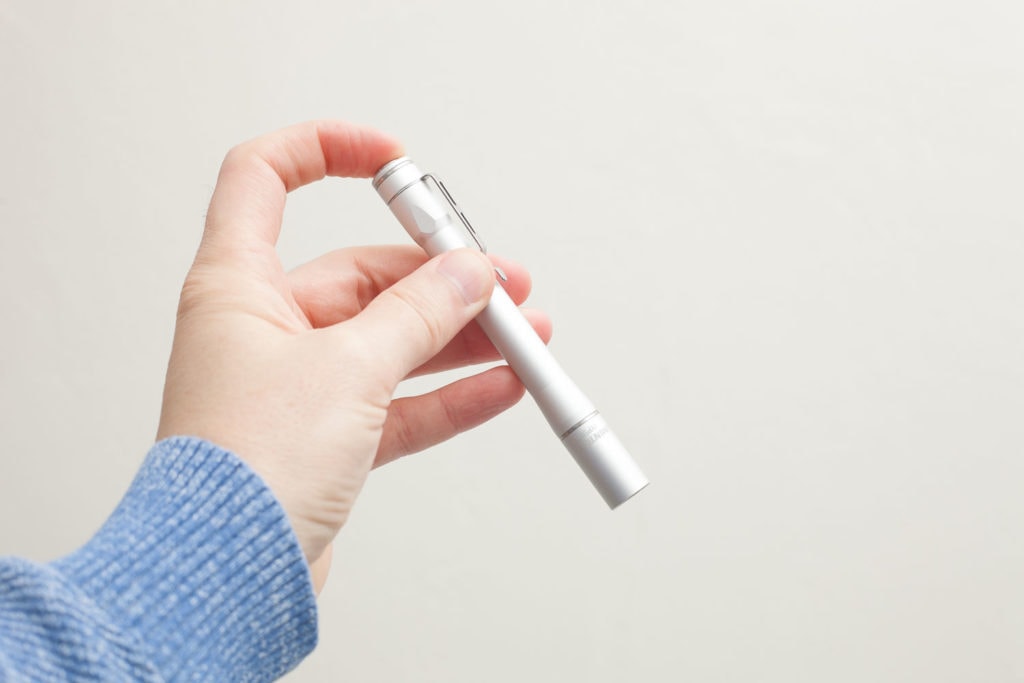
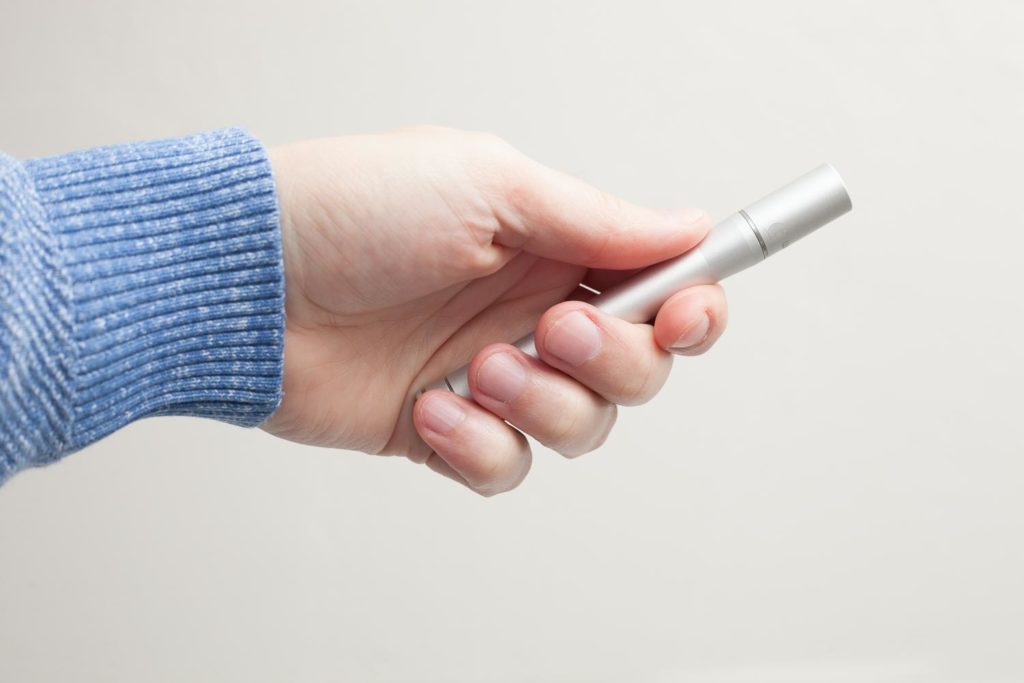
Build Quality, knurling, threads, and anodization
Since Lumintop has an obvious use case in mind with the IYP365. The design and coating is smooth and without any hard edges. For medical staff this is fine because they don’t wear thick hand gloves or get dirt on their fingers. Having smooth edges helps to slip it in your pocket without problems.
The IYP365 is extremely lightweight. This is likely also done on purpose. The quality itself is fine. But because of the weight (or the lack thereof), it feels a little cheap.
All parts fit well and the threads on its head-side are anodized. The threadings on the tailside are non-anodized. This is also done on purpose because you can control the 3 modes either from the tail or head. The tailswitch uses a reverse clicky with memory. When the tailswitch is activated you can use the head to change modes as well. Do a rapid twist off-on to change modes using the head.
If you’re a nurse and use this light to check people’s eyes, you might want to make sure the light is actually in low. Since it has mode memory, it can happen that you accidentally turn it on in High. Later more on this.
The included diffuser is foldable so you can easily sit on it without breaking it.
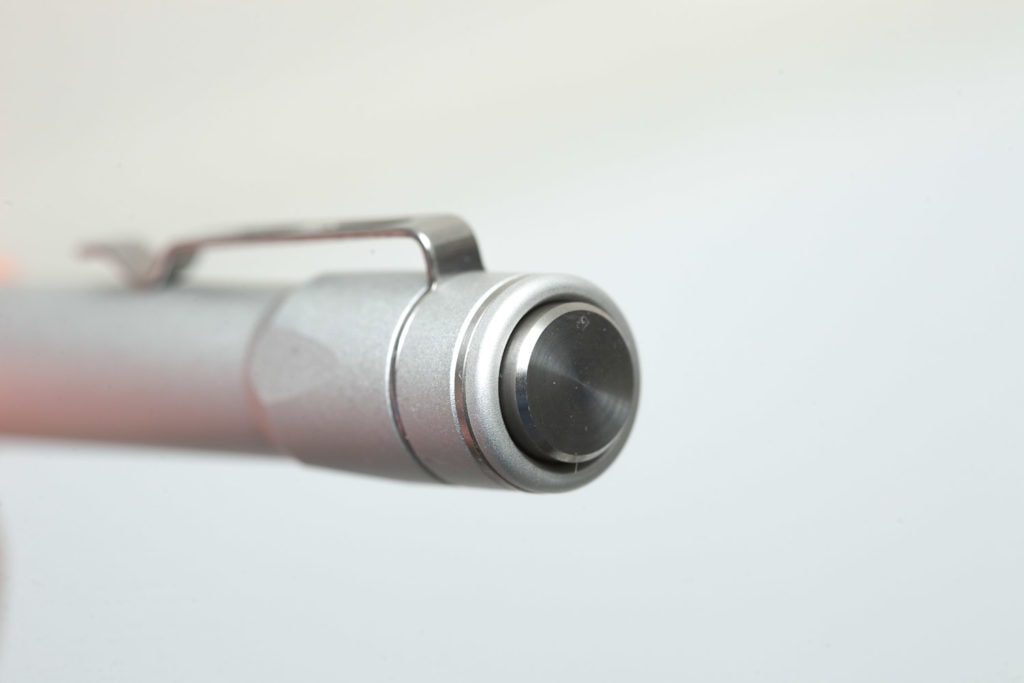
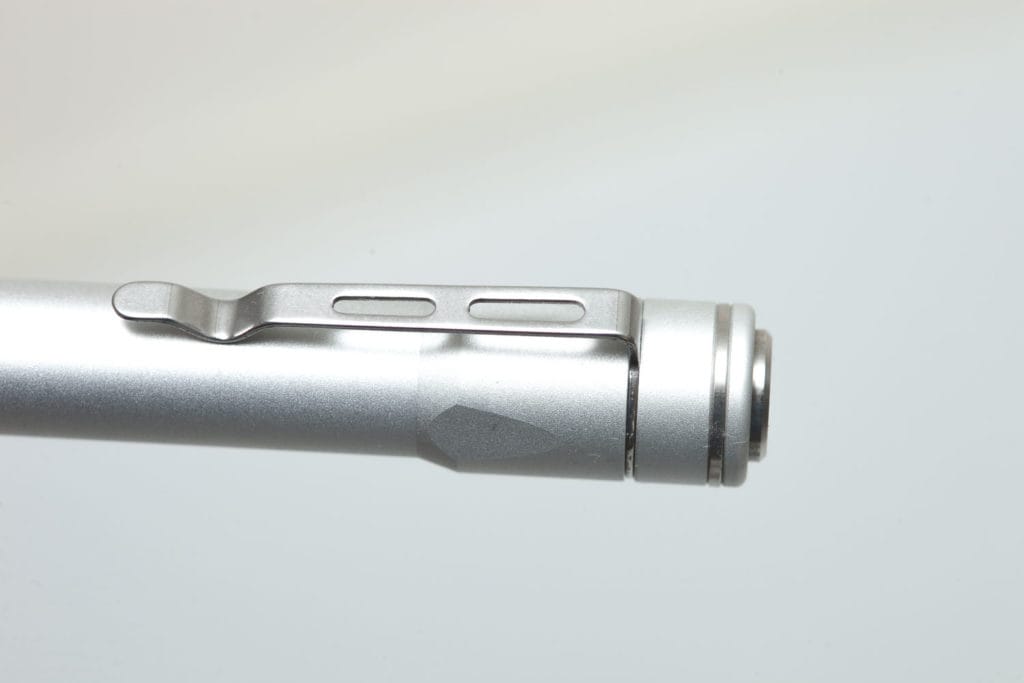
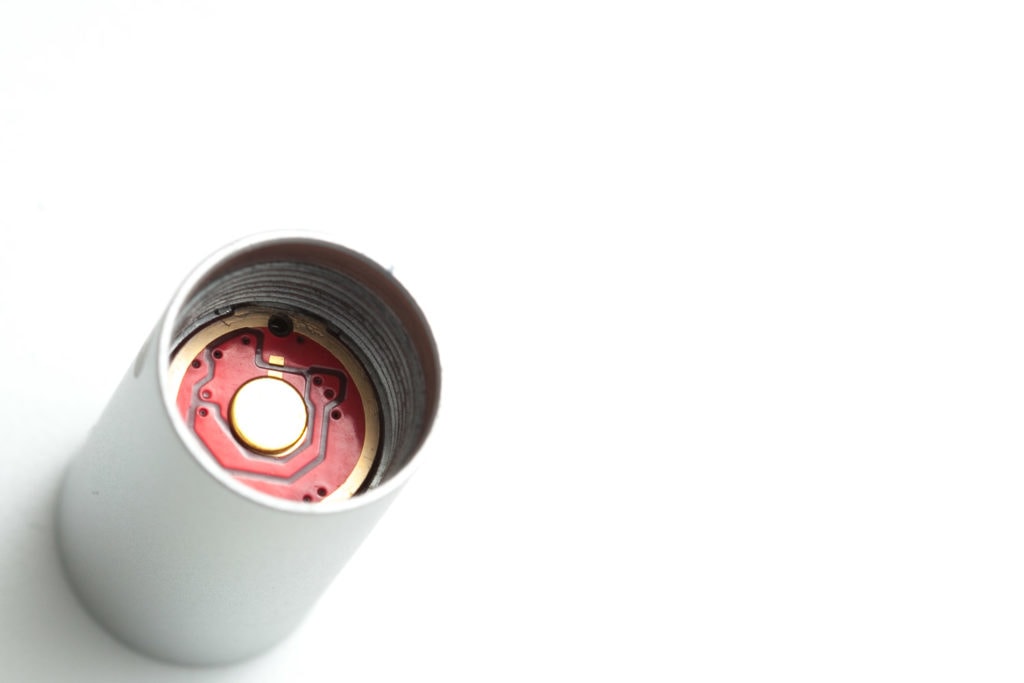
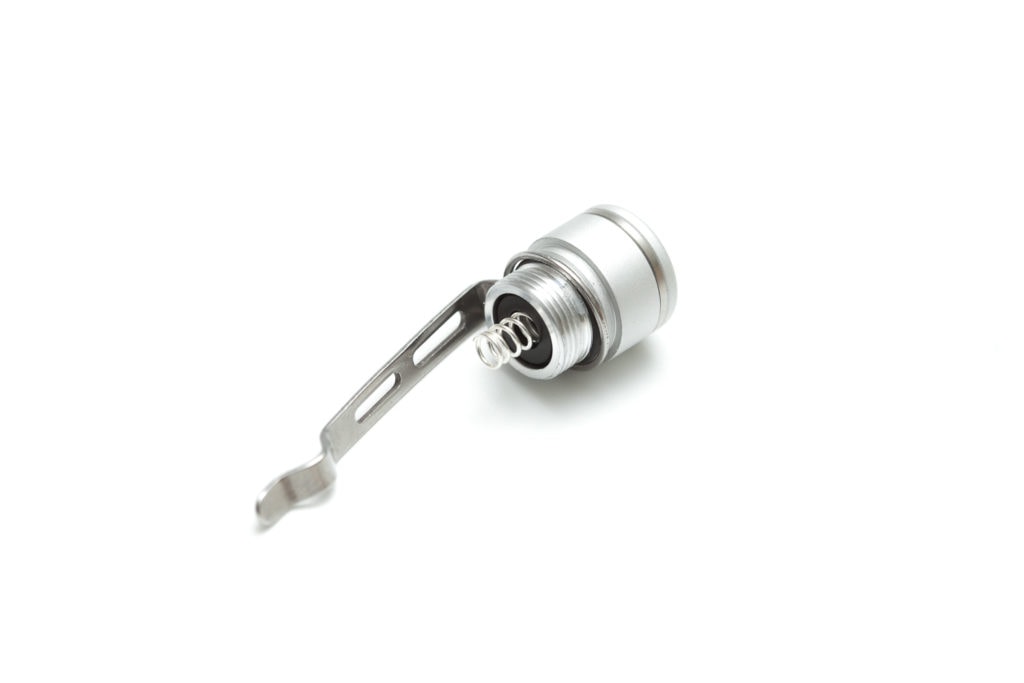
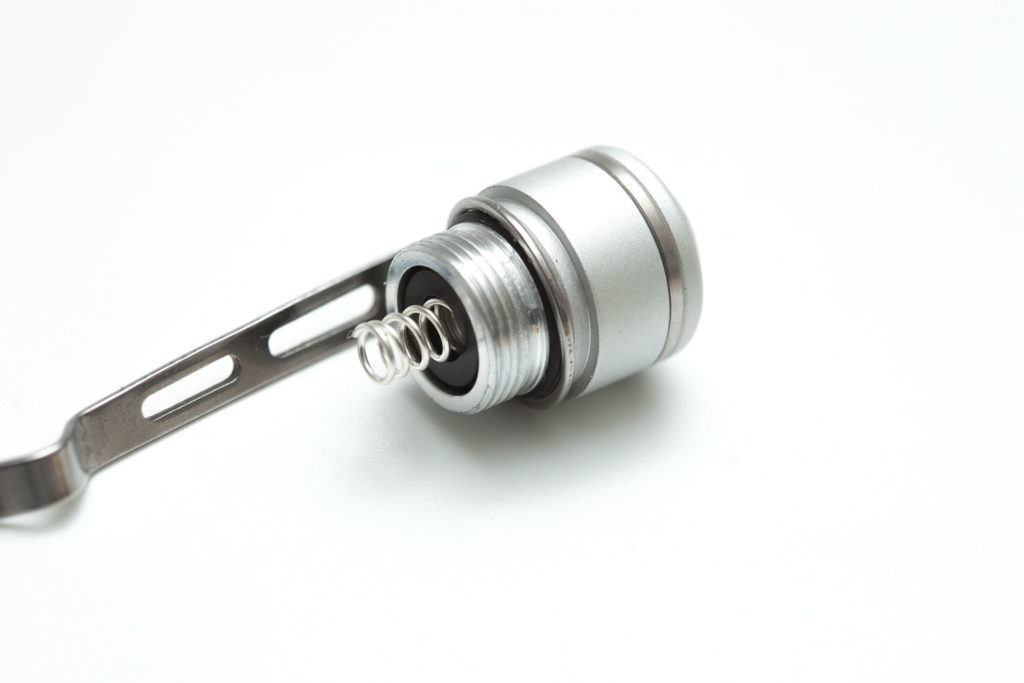
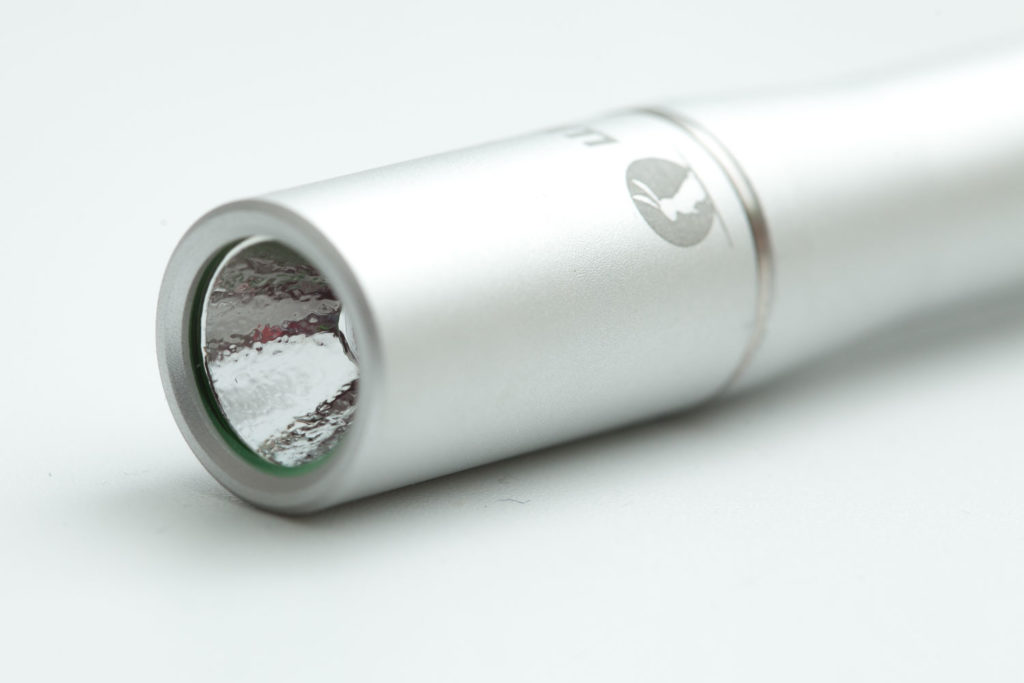
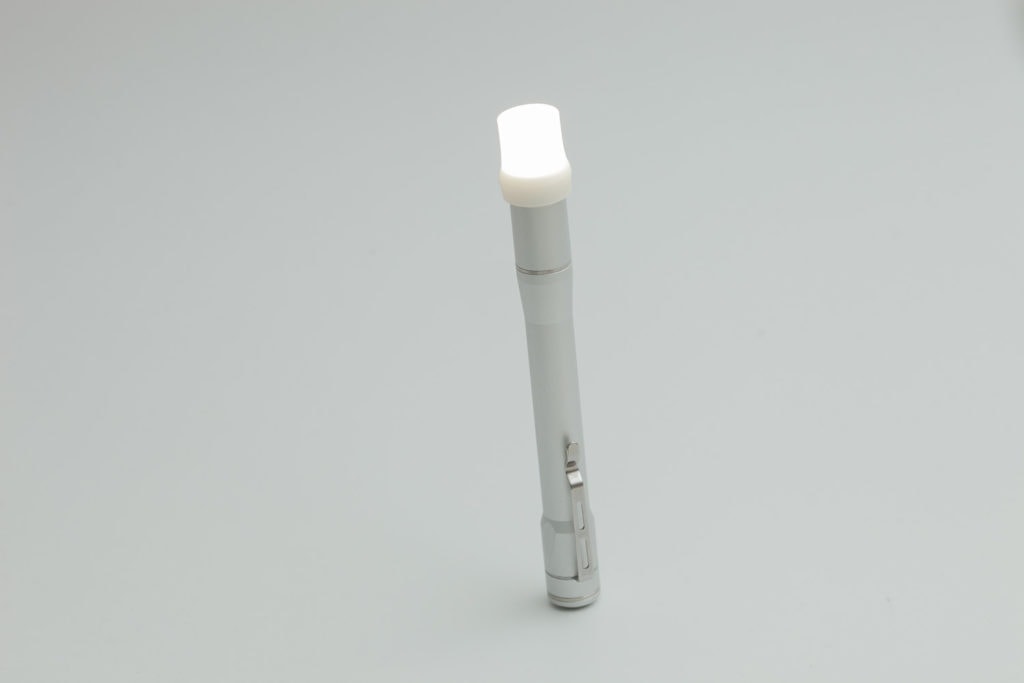
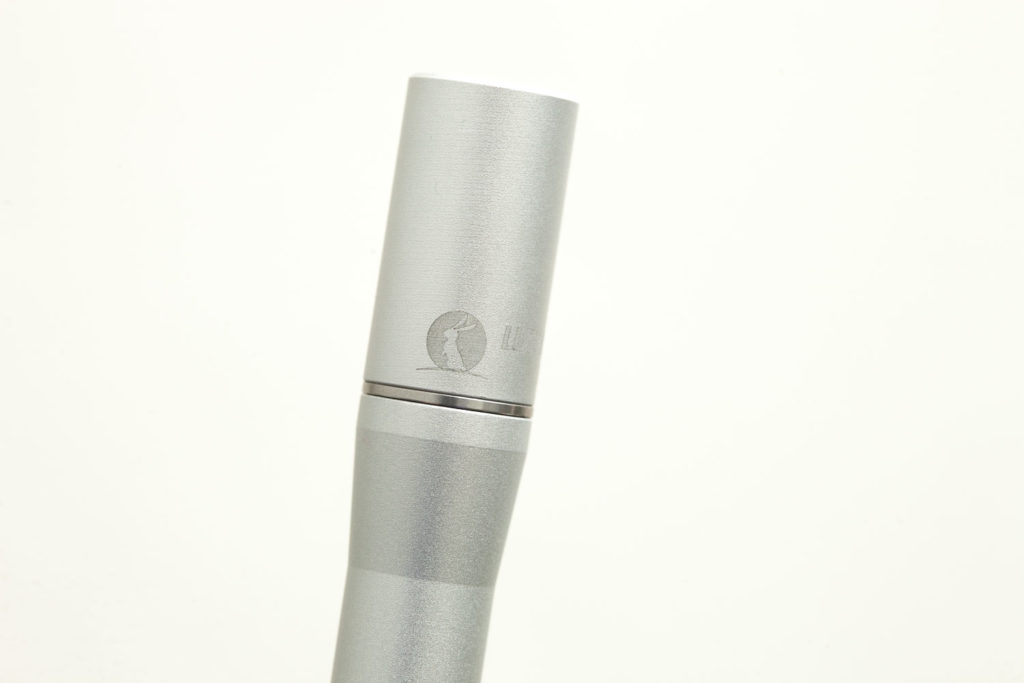
LEDs, Lens, Bezel, and Reflector
This particular light uses the Nichia 219C (some description say it’s a 219BT) which is a Hi CRI LED that is supposed to have more realistic color rendering than the other option, the CREE XP-G. Of course, that comes at a cost. The CREE LED is able to push 200 lumens while the Nichia is only able to push 145 lumens, according to the manufacturer.
Because the reflector has an orange peel finish, the beam looks pretty smooth with a smooth transition between hotspot and spill. The hotspot however is still very noticeable on close distance. I wish I could actually measure the tint temperature.
Inside the box the added a white diffuser as well. This can be used to light up a large area around the flashlight.
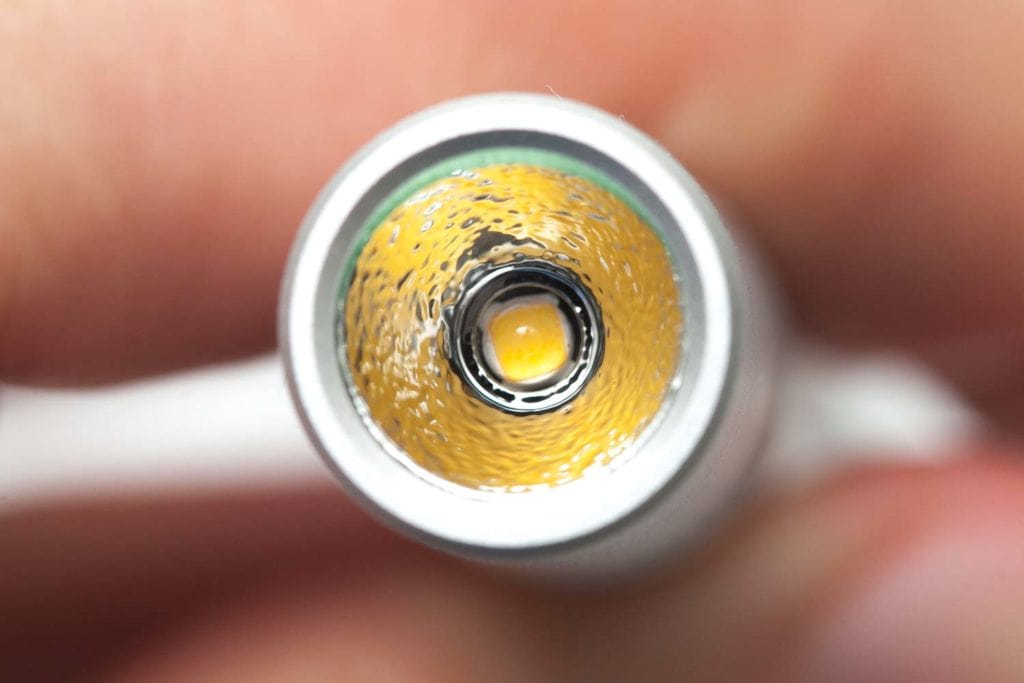
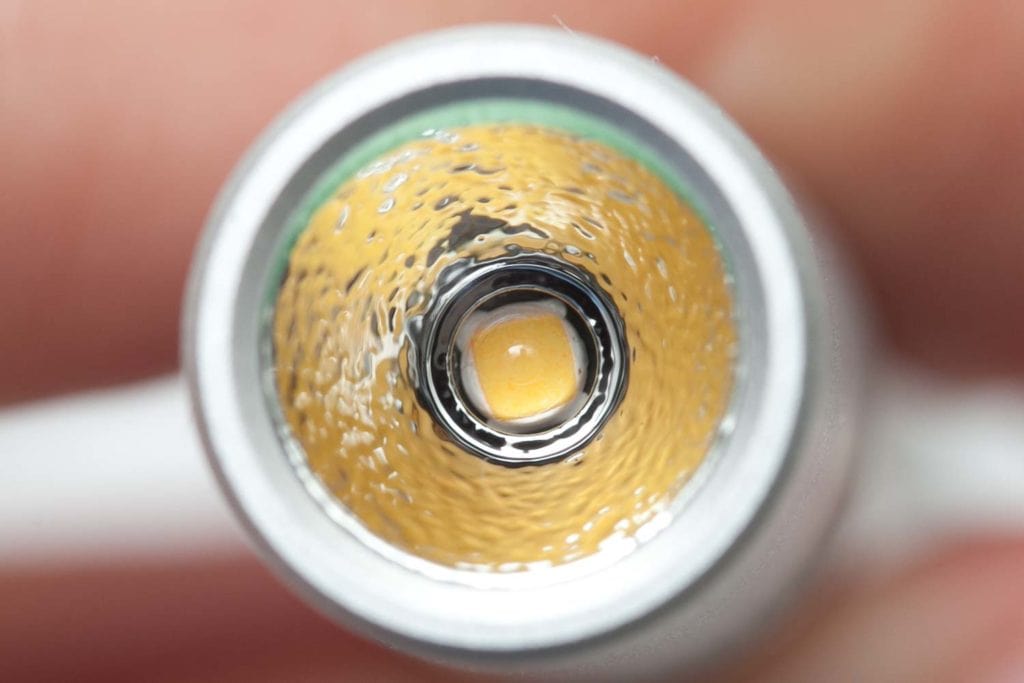

Dimensions:
- Length: 125.9 mm / 4.95″
- Head diameter: 14.4 mm / 0.57”
- Body diameter: 12.6 mm / 0.494″
Weight:
- Empty: 22.7g / 0.80 oz
- With 2 Eneloop batteries: 46.5 gr / 1.64 oz
Group 1: Left: Lumintop IYP365 and right: Acebeam PT10-GT.
Group 2: from left to right: Speras M10 Plus, Speras M10 Plus, Wurkkos WK02, Weltool M6-Dr, Nitecore MT06MD, Lumintop IYP360, Olight i3T Plus, Acebeam PT10-GT, Wuben E19.
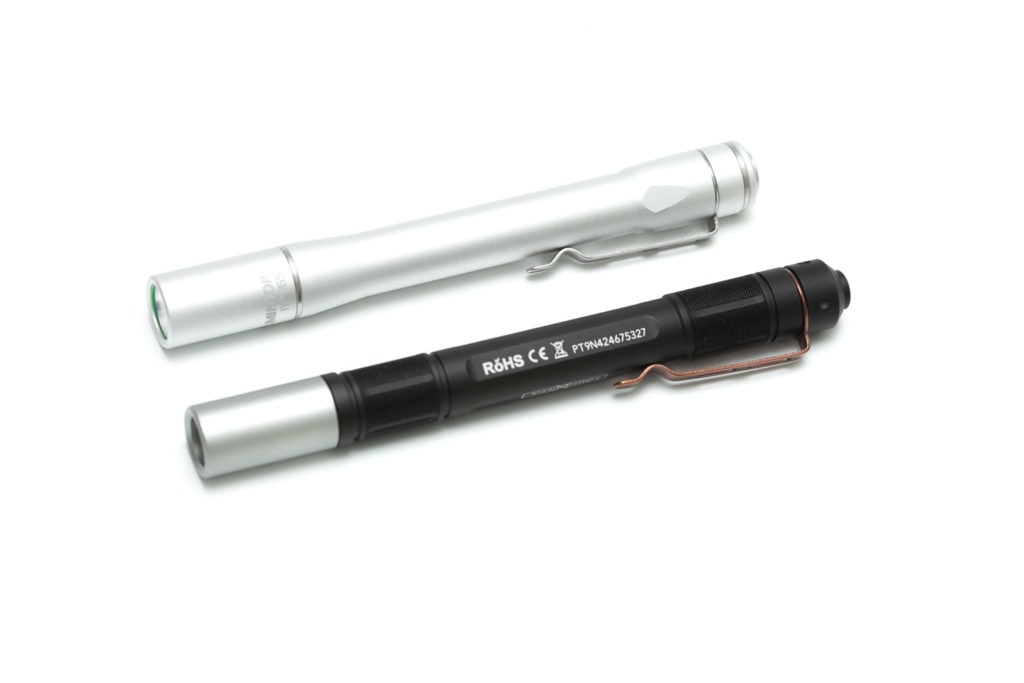
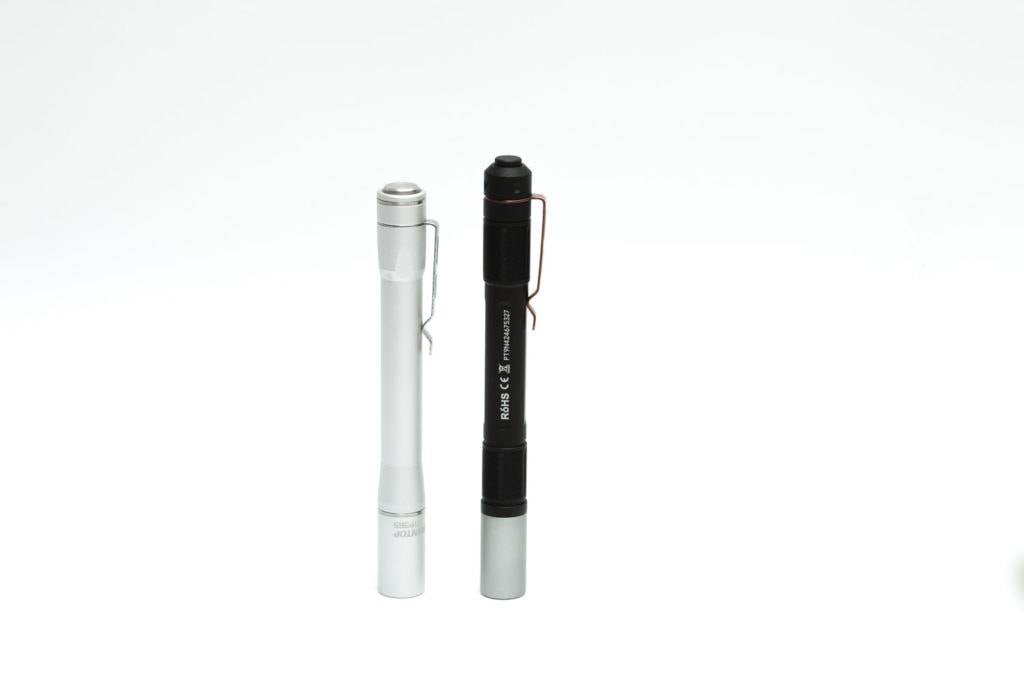
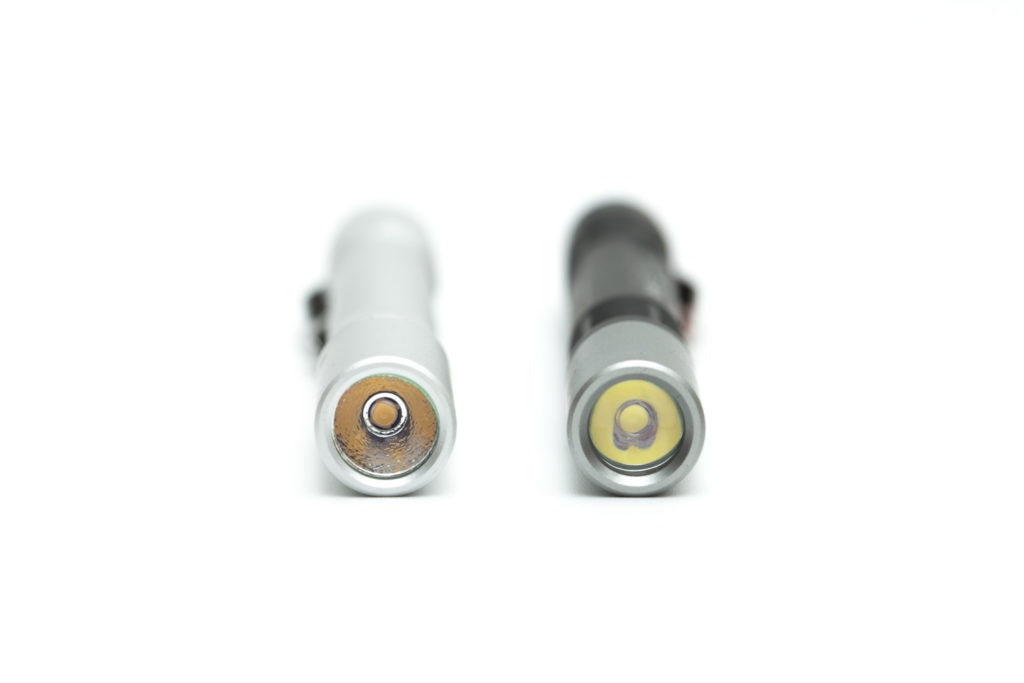
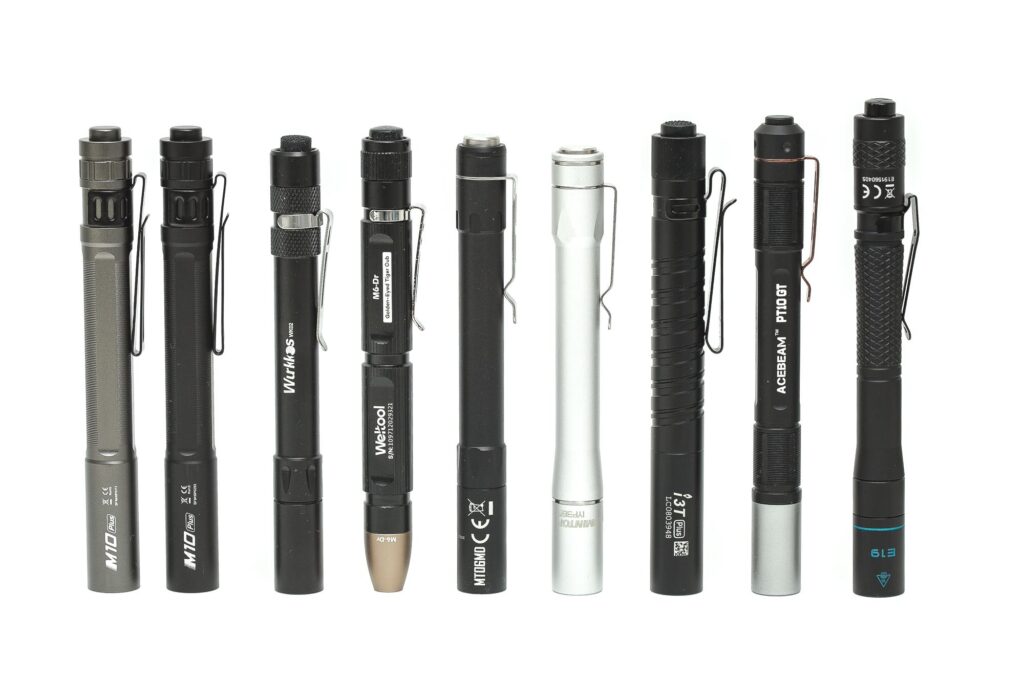
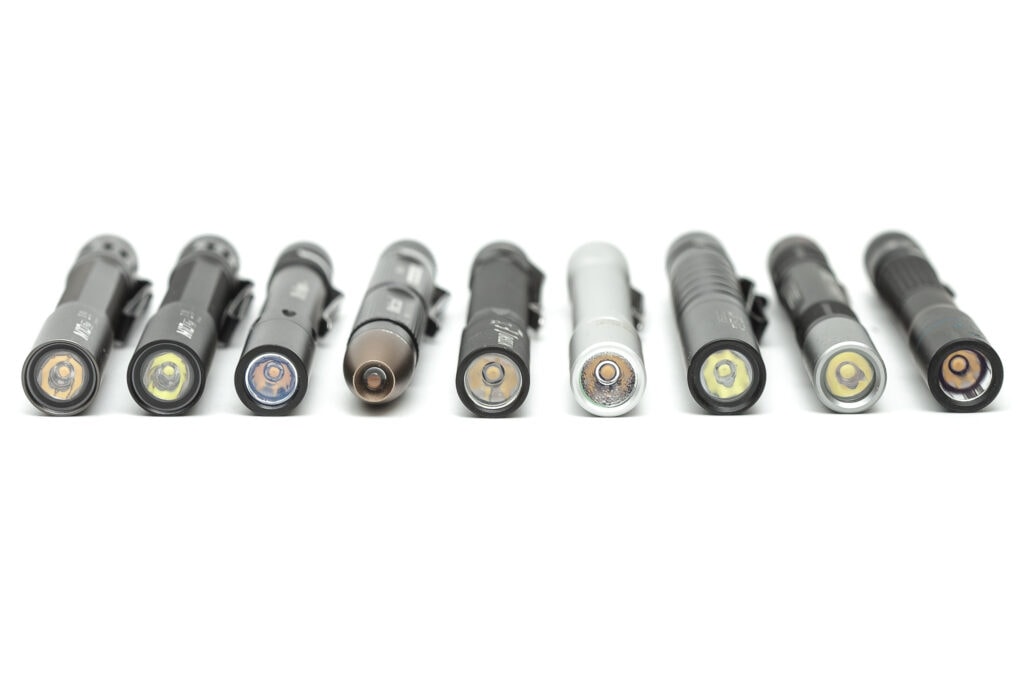
Driver & User Interface:
I like the way Lumintop used its UI. You can either use the tailcap to switch modes (quick taps when on) or twisting the head rapidly to change modes.
Available modes:
- High – Med – Low (starting from High)
From OFF:
- Single-click: On (to last used mode, mode memory)
- Double click: Off
From ON:
- Half-press: Cycle through the menu from Low to High
- Single-click: Off
- Twist head rapidly: cycle through the menu from Low to High
Mode memory:
- Yes. This might not be the best option if you use it to check people’s pupils in the hospital. Sorry ma’m for blinding you with 145 lumens right in your eyes.
Blinky modes menu:
- None
Low battery warning:
- None
Lock-out mode:
- Mechanical
PWM:
- Not visible by eye. This is the most important.
Firmware / UI Conclusion:
I would have hoped to start on Low without mode memory. Especially if you have the medical institutions as your use case.
Batteries and charging:
It accepts AAA batteries; Alkaline and NiMH. I would not recommend using Alkaline as a rule of thumb. But I can understand that is sometimes not an option and if you use it daily, the possibility for the batteries to leak is small.
I’m using Eneloop AAA batteries and they are heavier than the flashlight itself. Best is to unscrew the head to insert the batteries and not from the rear. If you do it from the rear, you might lose the pocket clip.

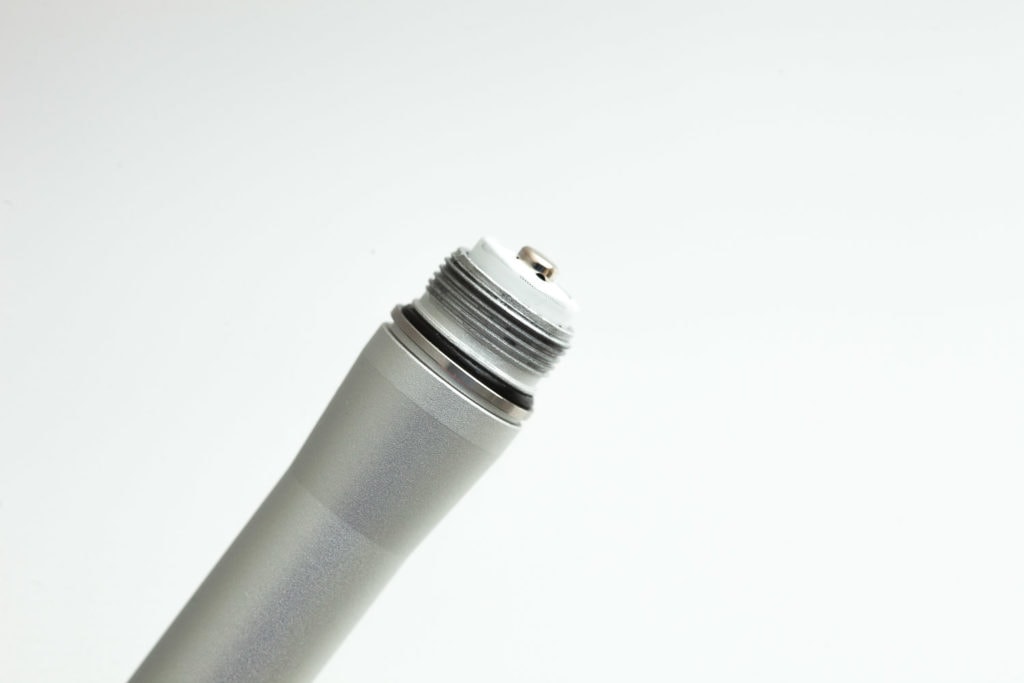
Performance:
Lumen measurements:
All output numbers are relative to my homemade Integrating Sphere. I set it up with an Extech SDL400 Lux Meter for measurements including a Kenko PRO1D ND-16 filter. The base measurement is done with a Convoy S2+ that is tested at 137 lumens.
Amps were measured with a Fluke 77III, at the tailcap. Batteries used 2*Eneloop AAA
| Mode | Amps | Specs | Measured output |
|---|---|---|---|
| High | 0.69 A | 145 | 130.50 lm |
| Med | 0.11 A | 25 | 22 lm |
| Low | 5.47 mA | 1 | 0.54 lm |
The lowest mode is difficult to measure because I’m using an ND (Neutral Density) filter in front of the sensor. That number can be off by quite a large margin. The LUX meter just showed 1 Lux…. without the ND filter it would have been much more precise. But each time I remove the ND filter, the setup will be different and the ND filter may not fit as well as the previous time. That’s my excuse
Runtime:
The runtime test was done with the 50cm integrating sphere, including the Kenko Pro1D ND-16 filter and Extech SDL400 data logging Lux Meter. Tested with 2AAA Eneloops
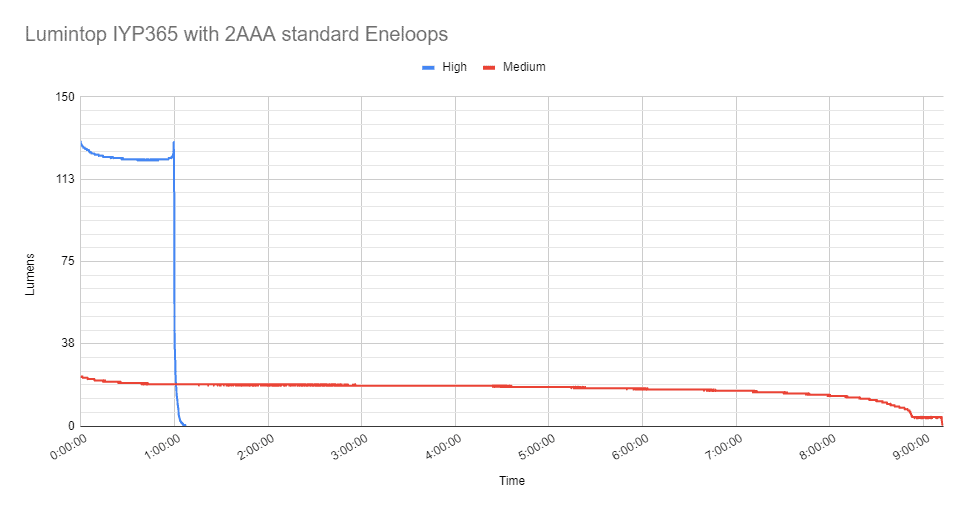
The runtime on High is exactly 1 hour. It quickly drops in output, so that is your low battery warning ;–)
The manufacturer claims a runtime of 35 minutes on High. So, in reality, it performs much better! Medium starts at around 22 lumens and stays pretty stable and finally runs out of juice at 9 hours and 12 minutes.
The manufacturer claims a runtime of 25 hours. So that is clearly not the case.
I haven’t tested Low because that can take days and I need to review more flashlights!
Compared to AAA alkaline batteries
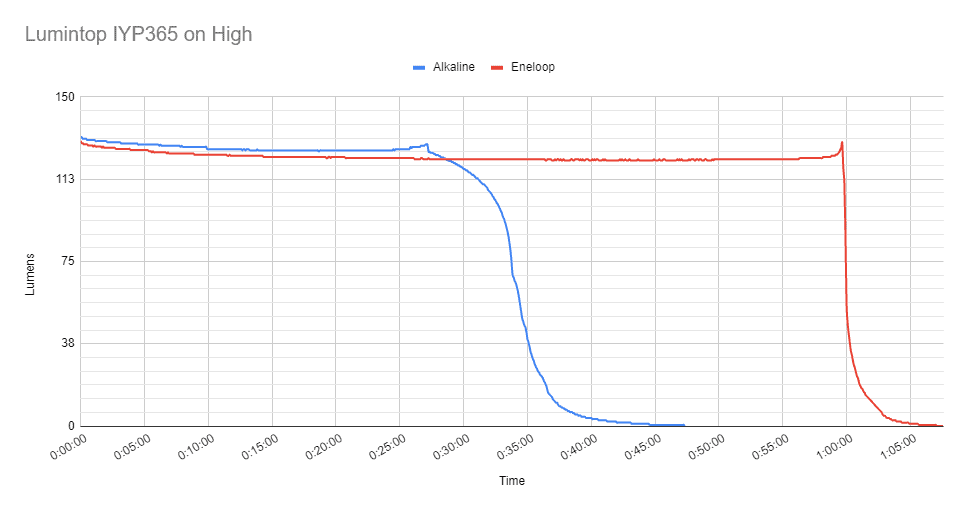
Then 30 minutes runtime makes sense. I believe the lower the output the longer Alkaline batteries should work. The higher the output the less runtime Alkaline batteries have.
Throw measurement:
I took measurements indoors with a professional Hagner E4-X Lux Meter.
Using the high mode only, I get:
- Indoors (5m): 700 cd = 53 meters / 58 yards throw
Tint comparison between the Acebeam PT10-GT and Lumintop IYP365.
In person you don’t really see these colors when you use them one by one. But the camera shows the difference best. The camera was set to 5000K
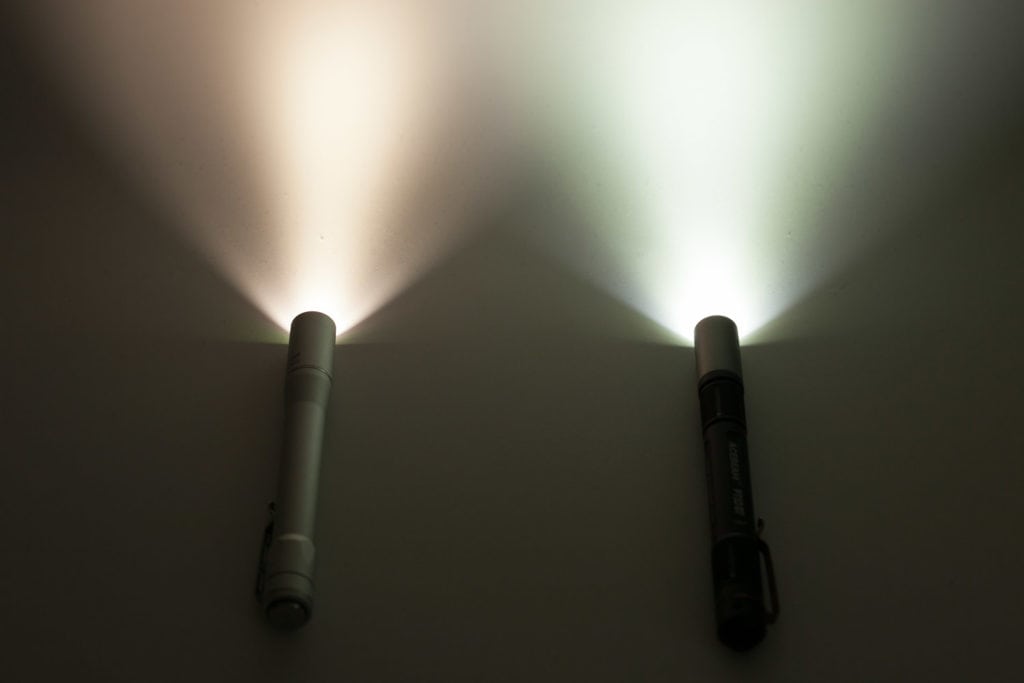
Disclaimer: This flashlight was bought with my own money. I have not been paid to review, nor have I been holding back on problems or defects.
Overall conclusion
Pros:
- Hi CRI emitter
- Lowest mode is really low
- Smooth in machining and coating
Cons
- The UI: High Med Low
- Mode memory
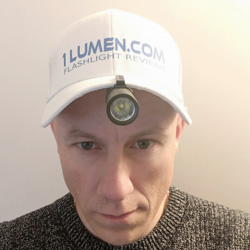
Rating: 4 stars ★★★★
The emitter used is a great choice for getting more accurate color rendering than most other LEDs on the market. The UI is still something you need to keep in mind when buying the light. It has mode memory and it goes from High to Low. If you’re a medical professional and want to use it to check somebody’s eyes a non-memory UI would have been better, starting in Low. Besides that, for $20 you have a nice little flashlight. It’s also available in Titanium and Copper.
Lumintop IYP365 for sale
Get 10% off every flashlight at Lumintop Online with our exclusive code: 1lumen
1lumen selects and reviews products personally. We may earn affiliate commissions through our links, which help support our testing.